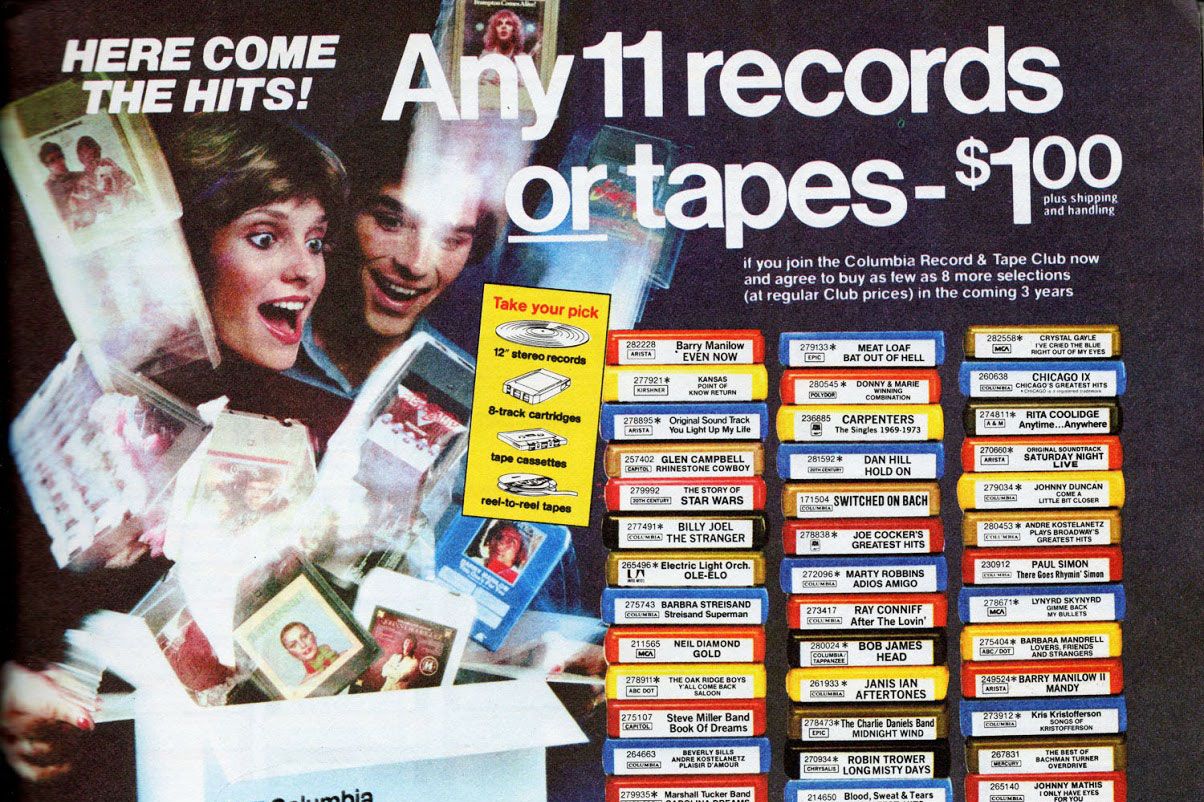BLAST FROM THE PAST: Columbia House (aka Columbia House Records & Tapes Club - mailorder)
| Photo: Insider // Twitter (X) |
In the old days (pre-2000), if you wanted to purchase music you had 2 options: go to a store or sign up for with a mail order company.
Columbia House Club (aka Columbia House Records & Tapes) was the big dog of the music mail order business. It was a convenient way
to buy music without the hassle of driving to a store.
Columbia House got its start in 1955 in NYC as an experiment by Columbia Records Music. Company execs realized there were many music lovers who lived out in the boonies where a record store didn’t exist or who didn’t have a car to drive to one. Back then having a car was a luxury to many households. So, a light bulb went off in company execs heads: let’s start a mail order record club.
To entice people to join they offered a free record just for
signing up – very smart of them – because it meant the person was hooked. To avoid pissing off record stores in cities,
new titles would not be available until 6 months after their release. By the
end of their first year in business they had 125,000 members who purchased
700,000 records! Their popularity grew so quickly they moved their HQ to Terre
Haute, Indiana to a huge distribution center. By the end of their 2nd
year, they racked up 680,000 members and sold 7 million records.
 |
| Photo: Vulture.com |
By 1963, Columbia House accounted for 10% market share of all record sales. They advertised heavily on Parade magazine. Their print ads blasted “11 records for one penny”. This was the hook to get people to become members. Once you became a member you were required to buy a certain number of records (or tapes, cassettes, 8-tracks) within a year at a huge markup…of course.
During the 1960s they expanded to offer music from other record labels such as Warner Brothers. This further increased the number of titles and artists in their library. The brainiacs at Columbia House realized new formats of listening to music were emerging: cassette, reel to reel, and 8-track. They offered titles in these new formats in addition to vinyl records.
Things were humming along until 1998-1999 when a seismic change in technology disrupted the music industry: online streaming. To save itself, Columbia House tried to merge with CD Now (a struggling retailer), but the merge didn’t go through. By then, Columbia House was struggling because of the introduction of online music streaming. At its peak, Columbia House had $1 billion in revenue and 8 million members; by 2011 it had $17 million in sales. The company tried to evolve by offering DVDs but the writing was on the wall - again due to streaming technology. Their demise was swift and it came at the hands of online streaming services such as Napster (in 1999), People Sound (in 2000), and MP3.com (in 2000).
The company ceased operations in 2011 becoming a dusty memory of the music industry. Here's an ad that will bring back fond memories.
Source: Slate; Smithsonian




Comments
Post a Comment